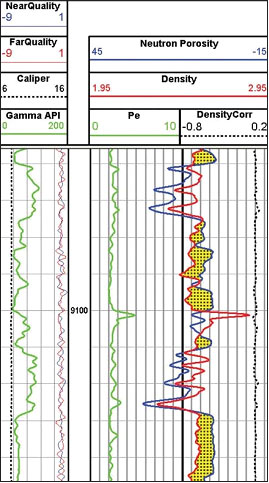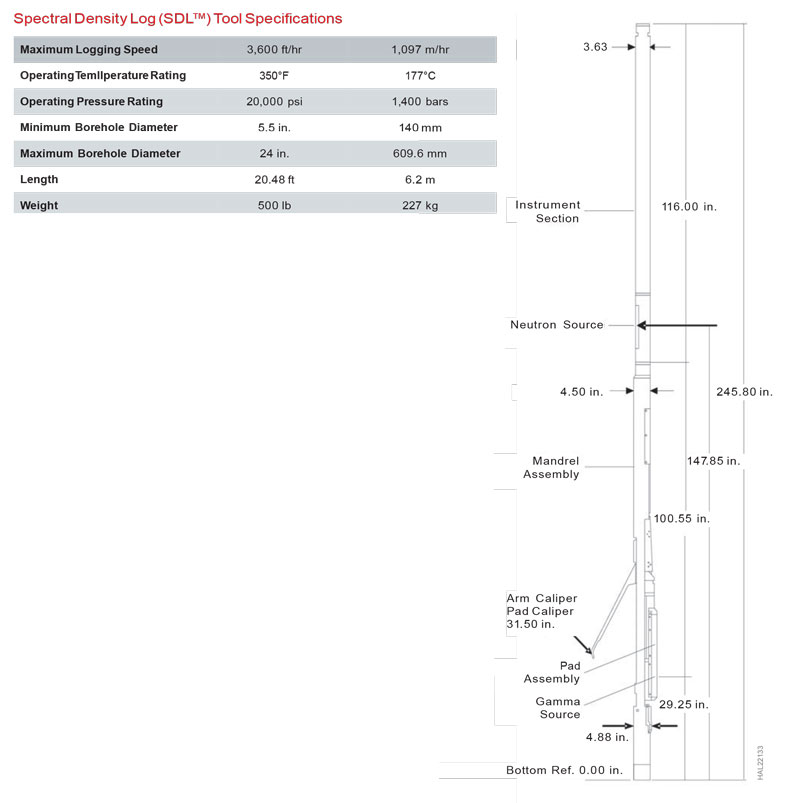Open Hole
Spectral Density Log (SDL™) Tool
PRECISE, HIGH-QUALITY DENSITY MEASUREMENTS
OVERVIEW
The Halliburton LOGIQ® Spectral Density Log (SDL™) tool provides superior measurements of the bulk density (ρb) and borehole- compensated photoelectric factor (Pe) that are critical to accurate determination of formation porosity and lithology.
The state-of-the-art tool design enables the SDL tool to achieve high gamma-ray count rates with minimal borehole sensitivity. The Cesium-137 source, tungsten shielding, and two high-efficiency
scintillation detectors are combined in a rugged construction to ensure reliable performance, even under hostile conditions. Advanced gain- stabilization helps maintain measurement integrity as temperatures vary while the latest generation pad geometry and articulation optimize pad ride in varying and non-ideal wellbore conditions.
The Halliburton LOGIQ SDL tool employs a new dynamic processing technique that combines computations based on hundreds of laboratory measurements to yield unprecedented accuracy and precision. Omega processing utilizes proprietary, next-generation algorithms to generate high-definition RhoB and Pe logs that are sensitive to thinly bedded formations. Unlike other techniques, Omega processing compensates for localized environmental effects, suppressing noise and artifacts for enhanced density.
Standard SDL logs are processed using 12 samples per ft, with a storage rate of four samples per ft. An advanced correction algorithm applied to the density data preserves accuracy across the full range of borehole sizes, mud types, and mud weights, with data-quality curves displayed in real time on a computer, and available as outputs to the log.
In addition, precise two-point shop calibrations and wellsite checks by field engineers help ensure reliably consistent performance. With a common instrumentation section, the SDL and Dual-Spaced Neutron (DSN) tools can be combined seamlessly, and yield a tool
string approximately ten ft shorter than conventional density-neutron combos. As a result, rig-up operations are faster and safer, and “rathole” requirements are reduced, saving significant rig time.
FEATURES AND BENEFITS
» Accurate ρb with minimal statistical variation, and real-time quality indicators for validation of ρb and Pe
» Consistent high-quality measurements for valid log response, even in weighted borehole fluids

» High vertical resolution processing for precise delineation of thinly bedded formations
» Rugged design for reliable performance, even under hostile conditions
» Combines with the Dual-Spaced Neutron tool for improved service delivery and efficiency, including gas detection


